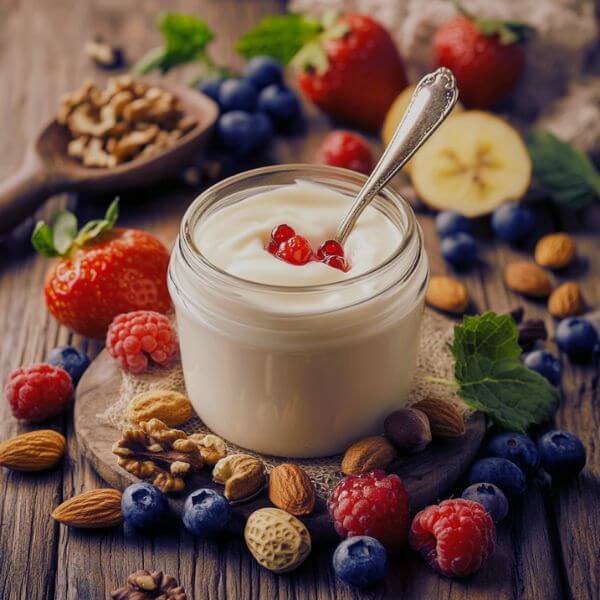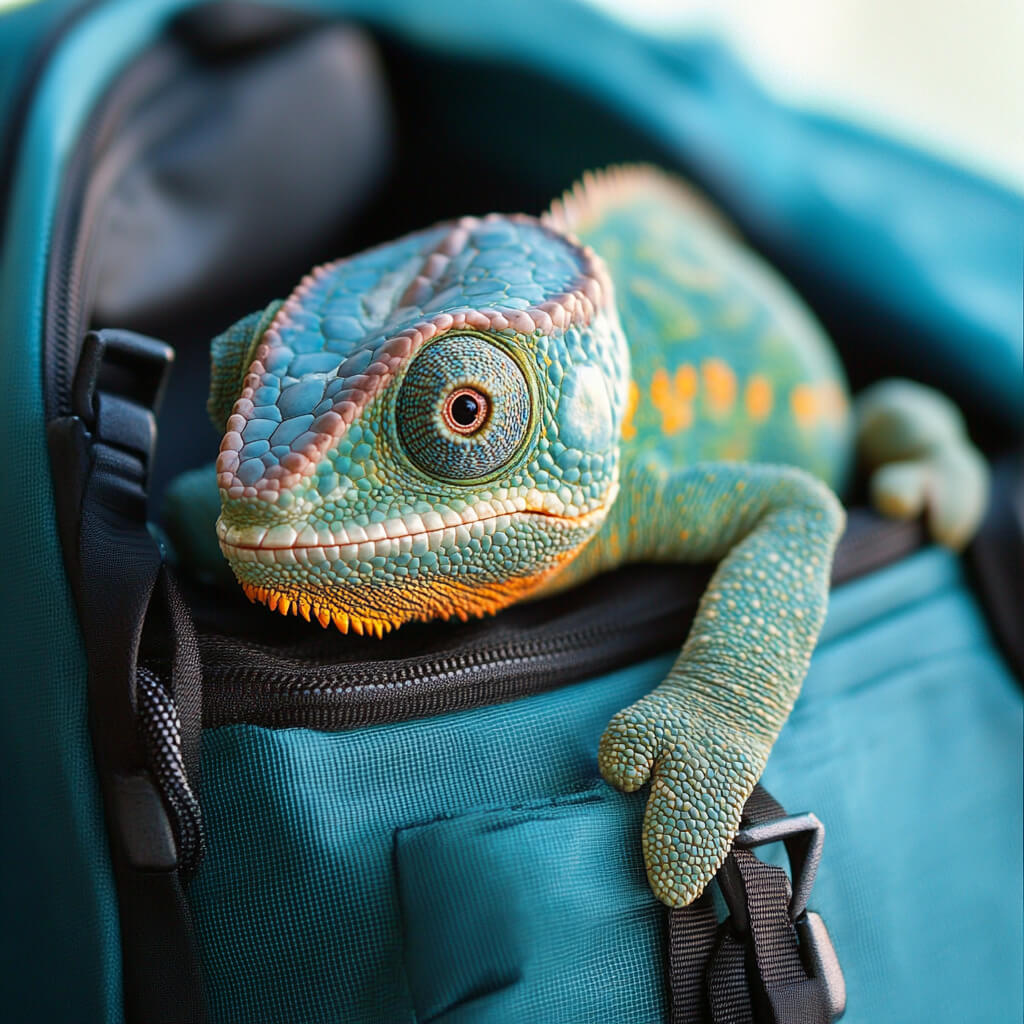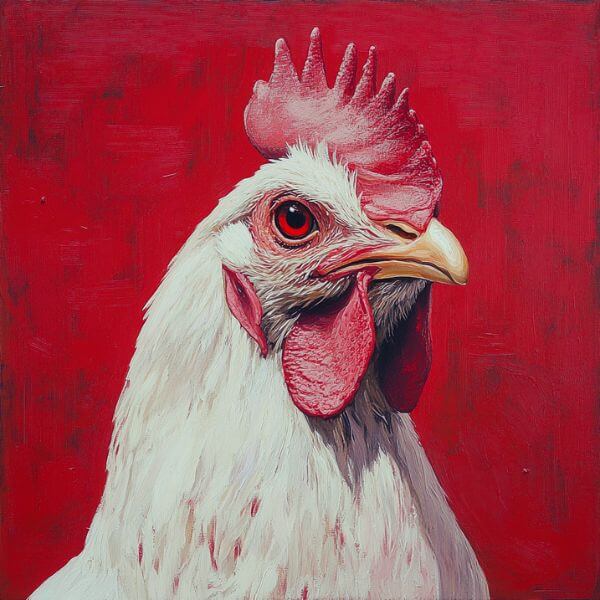No, chameleons should not eat yogurt!
I know, it might seem like a bummer. Yogurt is tasty and healthy for us humans, so why not for our scaly friends?
Well, there are a few good reasons:
- Chameleons are reptiles, and their bodies aren’t designed to digest dairy products.
- Yogurt doesn’t provide the nutrients that chameleons need to stay healthy.
- It could potentially cause some tummy troubles for our color-changing pals.
Risks of feeding yogurt to chameleons
Feeding yogurt to your chameleon isn’t just unnecessary; it could actually be harmful. Here’s why:
- Lactose intolerance in reptiles: Chameleons, like most reptiles, don’t produce the enzyme needed to break down lactose (the sugar in milk). This means yogurt could give them a bad case of indigestion or diarrhea.
- Digestive issues: Chameleons have sensitive tummies, and introducing unfamiliar foods like yogurt could upset their digestive system.
- Nutritional imbalance: Yogurt doesn’t provide the right balance of nutrients that chameleons need. Feeding them yogurt instead of their regular diet could lead to nutritional deficiencies.
Chameleon digestive system
To understand why yogurt is a no-go, let’s take a quick peek at how a chameleon’s tummy works.
The reptile digestion process is pretty different from ours:
Chameleon eats insect → Insect goes to stomach → Stomach acid breaks down food → Nutrients absorbed in intestines → Waste exits body
Chameleons have evolved to digest insects, not dairy products. Their digestive system is shorter and less complex than ours, which means they can’t handle a wide variety of foods like we can.
Safe and healthy alternatives to yogurt
Instead of yogurt, let’s focus on foods that chameleons actually enjoy and benefit from. Here’s a list of chameleon-approved snacks:
- Crickets (the chameleon equivalent of pizza!)
- Roaches (yum!)
- Mealworms (like little protein bars for chameleons)
- Waxworms (an occasional treat, like chameleon candy)
- Other insects like flies and grasshoppers
For some variety, you can offer small amounts of fruits and veggies:
- Apples (no seeds)
- Berries
- Leafy greens
- Carrots (grated)
Remember, insects should make up the bulk of your chameleon’s diet, with fruits and veggies as occasional treats.
Proper chameleon feeding practices
Now that we know what to feed our chameleons, let’s talk about how to feed them. Here’s a simple feeding schedule for chameleons:
| Age | Feeding frequency |
| Baby (0-3 months) | 2-3 times daily |
| Juvenile (3-12 months) | 1-2 times daily |
| Adult (1+ years) | Every other day |
Remember, every chameleon is unique, so you might need to adjust this schedule based on your pet’s needs and appetite.
Pro tip: “Gut-loading” and “dusting” are two important practices for chameleon owners. Gut-loading means feeding nutritious foods to the insects before giving them to your chameleon. Dusting involves coating the insects with calcium or vitamin powder. These techniques help ensure your chameleon gets all the nutrients it needs.
Calcium and chameleons
Speaking of calcium, let’s chat about why it’s so important for our color-changing friends. Calcium plays a crucial role in chameleon health, helping with:
- Strong bones and shell
- Muscle function
- Egg production (for females)
To make sure your chameleon gets enough calcium, you can:
- Dust insects with calcium powder
- Provide a calcium supplement
- Ensure proper UVB lighting for vitamin D3 production
Remember, balance is key! Too much calcium can be just as bad as too little.
Recognizing and preventing dietary issues
Keep an eye out for these signs that might indicate dietary mistakes or nutritional problems:
- Weak or soft bones
- Difficulty shedding
- Loss of appetite
- Lethargy
- Discoloration
If you notice any of these symptoms, it’s time to consult a reptile vet. They can help you adjust your chameleon’s diet and address any health concerns.
FAQs
Can chameleons drink milk?
Nope! Just like yogurt, milk isn’t suitable for chameleons. Stick to water for hydration.
What human foods are safe for chameleons?
Most human foods aren’t great for chameleons. Small amounts of certain fruits and veggies are okay as occasional treats, but insects should be their main food.
How often should I feed my chameleon?
It depends on their age. Baby chameleons eat 2-3 times daily, while adults usually eat every other day.
Do chameleons need vitamin supplements?
Yes, most chameleons benefit from calcium and multivitamin supplements. Always follow your vet’s recommendations.
Can chameleons eat fruit yogurt?
Nope! Fruit yogurt is still dairy-based and not suitable for chameleons. Offer small pieces of fresh fruit instead.
Conclusion
While yogurt might be a tasty treat for us, it’s definitely not on the menu for chameleons. These amazing reptiles have specific dietary needs that are best met with a variety of insects and the occasional fruit or veggie snack.
Remember, the key to a happy, healthy chameleon is providing a balanced diet that mimics what they’d eat in the wild. So, next time you’re enjoying your morning yogurt, maybe offer your scaly friend a cricket instead!
Keep those chameleons colorful and content, and happy feeding!







Leave a Reply